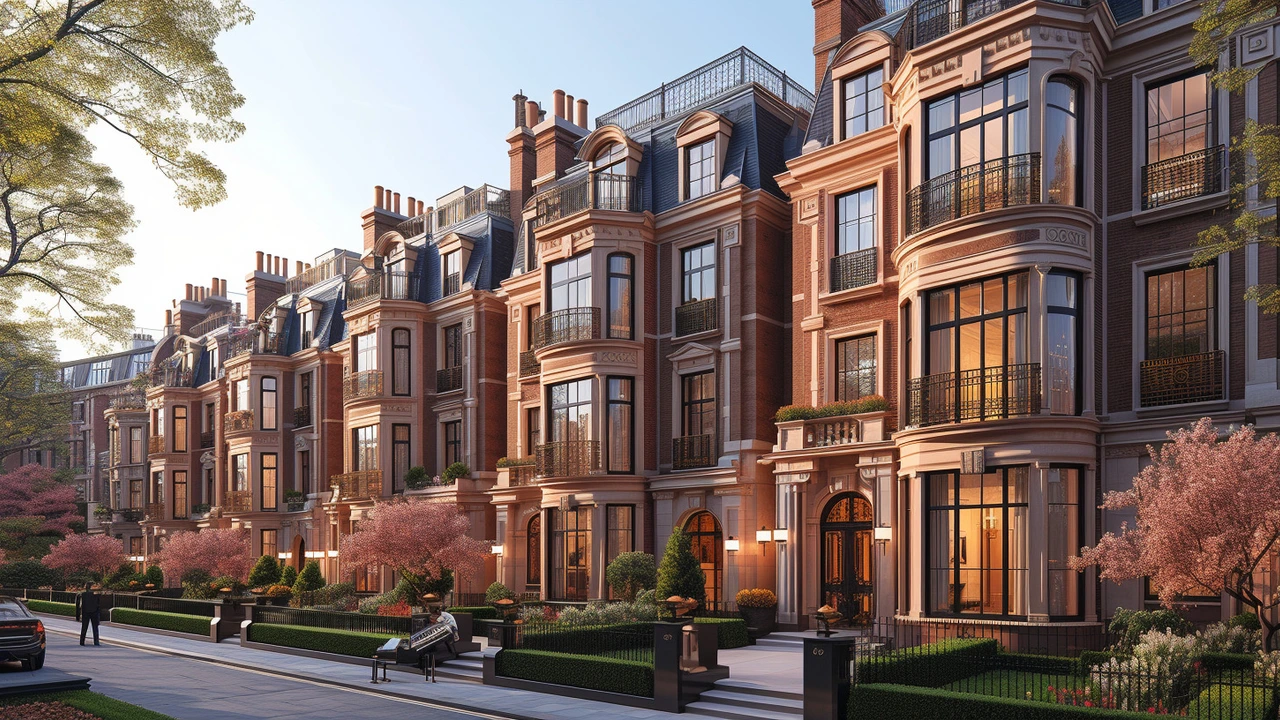The Cultural Significance of Georgian Architecture
 Nov, 14 2023
Nov, 14 2023
Discovering the Intricacies of Georgian Architecture
As architectural journeys go, tracking the path of Georgian architecture is akin to following the footprints of a long, grand promenade. These architectural designs, known for their symmetrical and organized vibes, often time-transports us to Jane Austen novels with lavish estates, manicured gardens, and grand entryways. I had an opportunity to dive into the depths of this very era when Julian, my dear spouse, and I happened upon an old estate during our European tour a few years back. It was love at first sight with the architectural charms of the Georgian era.
A Sneak Peek into the History of Georgian Architecture
The Georgian style of architecture encapsulates designs from 1714 to 1830, a period corresponding to the reign of British monarchs named George I through George IV. This period was synonymous with prosperity, resulting in a boom of urban development, especially in growing cities like London. A nod to this period in architecture pulls our attention to simple and understated elegance.
The Peculiarities and Characteristics of Georgian Architecture
Georgian architecture is all about meticulous detail, balance, and symmetry – one might call it the architectural equivalent of OCD! The edifice of a Georgian house features a two-story façade with five windows across the front. The central one, usually crowned by a pediment for that essential emphasis, is quite picturesque. Now, if you're thinking that this pattern seems mundanely symmetrical, hold onto your horses, because Georgian architecture has a way of making ordinary seem unified, stately, and grand.
Dabbling in the Materials and the Format
The brickwork of Georgian architecture is an interesting blend of simplicity and precision. The bricks, often coloured in hues of red, yellow, or brown, were bonded in neat, linear arrangements. The use of other materials like stone for detailing or stucco for finish further added to the beauty of Georgian designs. I still remember how Julian and I were in awe of the craftsmanship at this grand mansion we saw in Bath, England.
Georgian Interior Decor - Luxury Coupled with Restraint
Let’s step inside a Georgian house now, where it’s all about proportion and balance once again. The interiors are known for their sense of lavish, yet refined, decor. Wallpapers were popular, predominantly in floral or striped patterns, and the floor was often covered in Oriental carpets of exuberant hues. Also, let's not forget that ubiquitous, sweeping staircase acting as the centrepiece in the entrance hallway, greeting everyone with a grandeur that was uniquely Georgian.
Georgian Architecture – Where Gardens Meet Grace
The Georgian era was popularly characterised by designs extending beyond the houses, culminating in beautifully manicured gardens and courtyards. The concept of having extensive landscapes with symmetrical designs complemented the grandeur of the homes. If you have ever attempted gardening, like me, you'd appreciate how intricate and time-consuming the maintenance of these designs can be. The memory of Daisy, my Border Collie, playfully disrupting my attempts at a symmetrical garden back home still brings a smile to my face.
Notable Examples of Georgian Architecture
Renowned for its beauty, Georgian architecture can be spotted all across Europe, especially in England. Prominent examples would include the Royal Crescent in Bath, Somerset House in London, and the Circus in Bath. Each of these is a testament to the essence of Georgian architecture, embracing simplicity, symmetry, and a sense of balance commingled with aesthetic splendour.
The Legacy and Influence of Georgian Architecture
Rolled within the pages of chronicles, the legacy of Georgian architecture remains profound even to this day; it is seen in elements of the American colonial and federal period design. The style's lasting run and love from the people meant it saw a revival during the early 20th and late 19th centuries, more commonly referred to as the Georgian Revival or Neo-Georgian movement. This manner of design truly captures the essence of a bygone era whilst maintaining a timeless relevancy.
Georgian Architecture: The Harmony of Simplicity and Elegance
Georgian architecture is a lot like that beautiful waltz where elegance meets symmetry in a grand dance. Every brick, every window, every arch and column, each blooms and bends in a harmonious procession that harks to an era of refinement and aesthetics. This architectural style truly enthralls the senses, wrapping us in a warm, familiar embrace that reminds us of the pages of our favourite Austen novel come to life. So next time you look upon a Georgian building or estate, remember to appreciate not just the visible symmetry, but the harmony and the stories written within the bricks.